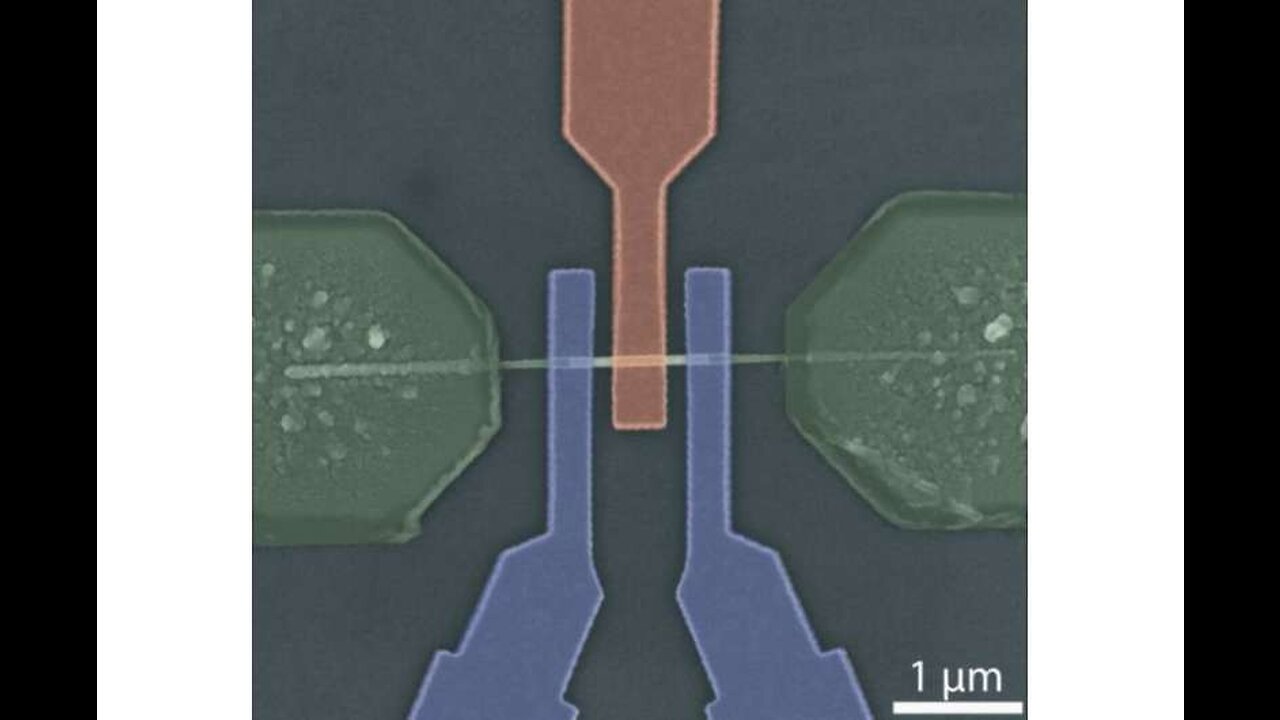Premium Only Content

New skyrmion transistors propel quantum and AI research - Phys.org
🥇 Bonuses, Promotions, and the Best Online Casino Reviews you can trust: https://bit.ly/BigFunCasinoGame
New skyrmion transistors propel quantum and AI research - Phys.org
Operation of a skyrmion transistor. a) Skyrmion transistor device geometry. The blue dashed box is a skyrmion channel. The red dashed box acts as a skyrmion generator and the green dashed box is a skyrmion gate. Scale bar, 10 µm. b) From the initial state; c) a skyrmion is generated; and d–f) the skyrmion moves and passes through the skyrmion gate region. g–k) After lowering PMA in the skyrmion gate region by applying a positive gate voltage pulse, k) the generated skyrmion is blocked at the right interface of the skyrmion gate region. l–p) After returning PMA in the skyrmion gate region by applying a negative gate voltage pulse, p) a skyrmion can pass the skyrmion gate region again. Credit: Korea Research Institute of Standards and Science (KRISS) In an era marked by an escalating energy crisis, the world stands on the precipice of a transformative revolution in spintronics technology, promising ultra-low power consumption paired with superior performance. To illustrate the potential, consider this: the power consumed by AlphaGo during its famous Go game in 2016 equaled the daily power use of 100 households. By 2021, Tesla's autonomous driving AI required over ten times that amount of power for learning. In response to this growing demand, the Korea Research Institute of Standards and Science (KRISS) has pioneered the world's first transistor capable of controlling skyrmions. This breakthrough paves the way for the development of next-generation ultra-low-power devices and is anticipated to make significant contributions to quantum and AI research. The findings are published in the journal Advanced Materials. Skyrmions, arranged in a vortex-like spin structure, are unique because they can be miniaturized to several nanometers, making them movable with exceptionally low power. This characteristic positions them as a crucial element in the evolution of spintronics applications. The explosive growth of electronic engineering in the 21st century can be traced back to the 1947 invention of the transistor at Bell Laboratories in the United States. Acting as an amplifier and switch for electrical currents, the transistor has been pivotal in the field of electronic engineering. The discovery of the skyrmion in 2009 sparked widespread research into a skyrmion-based transistor, but the absence of essential technology to control skyrmion movement thwarted these efforts. This bottleneck has been overcome with KRISS's newly developed skyrmion transistor, which leverages proprietary technology to electronically manage the movement of skyrmions created in magnetic materials. This innovative solution enables the precise control of skyrmion flow or halting, akin to how conventional transistors modulate electric current. A critical aspect of managing magnetic skyrmion movement lies in controlling magnetic anisotropy, which influences the energy of skyrmions. Previous research endeavored to regulate magnetic anisotropy through oxygen movement within devices but failed to achieve uniform control. Overcoming this challenge, the KRISS Quantum Spin Team developed a groundbreaking method for uniform control of magnetic anisotropy by leveraging hydrogen within aluminum oxide insulators, marking a world-first in the experimental implementation of skyrmion transistors. This milestone represents yet another foundational technology for spintronic devices, following the institute's 2021 achievement in the generation, deletion, and movement of skyrmions. The advent of the spintronics transistor is set to expedite the development of spintronics-based devices, such as neuromorphic and logic devices, which offer substantial advantages in power consumption, stability, and speed over traditional electronic devices. Dr. Chan Yong Hwang, a director of the KRISS Quantum Technology Institute, says, "Major Korean companies are pivoting their focus to next-generation semiconductors that utilize spintronics to transcend the constraints of current silicon semiconductors. We plan to advance spintronics-related technology further and incorporate them into next-generation semiconductor devices and quantum technology." Reflecting on the significance of the achievement, Dr. Seungmo Yang, a senior researcher at KRISS, says, "The transistor ignited the digital revolution of the 20th century....
-
 2:50:56
2:50:56
The Confessionals
20 hours agoHe Killed a Monster (Then They Told Him to Stay Silent)
5.42K7 -
 41:42
41:42
Brad Owen Poker
14 hours ago $0.31 earnedMy BIGGEST WIN EVER!! $50,000+ In DREAM Session!! Must See! BEST I’ve Ever Run! Poker Vlog Ep 360
4.02K -
 17:53
17:53
The Illusion of Consensus
18 hours ago $0.39 earnedWhat Women REALLY Want in Public (It’s Not What You Think) | Geoffrey Miller
4.57K1 -
 1:32:16
1:32:16
Uncommon Sense In Current Times
17 hours ago $0.32 earnedPolygyny Debate: The Biblical Case For and Against Plural Marriage | Uncommon Sense
8.27K1 -
 LIVE
LIVE
BEK TV
23 hours agoTrent Loos in the Morning - 12/17/2025
106 watching -
 23:42
23:42
Athlete & Artist Show
4 days ago $0.41 earnedWorld Junior Invites & Snubs, NHL Threatens To Pull Out Of Olympics
6.19K -
 57:22
57:22
Coin Stories with Natalie Brunell
16 hours agoWill 1 Bitcoin Be Generational Wealth? Whales Selling, Legacy Planning & Price Drivers
85.1K5 -
 3:04:49
3:04:49
Price of Reason
15 hours agoTrump wants Tim Walz to RESIGN! Welcome to Derry Finale! Song Sung Blue EARLY REVIEW! Lanterns WOKE?
280K22 -
 11:47
11:47
Liberty Hangout
1 day agoAnti-Trump Beta FARTS On Me Instead of Debating
69.2K88 -
 1:37:20
1:37:20
FreshandFit
11 hours agoShe’s Not Your Girl It’s Just Your Turn
76.7K12